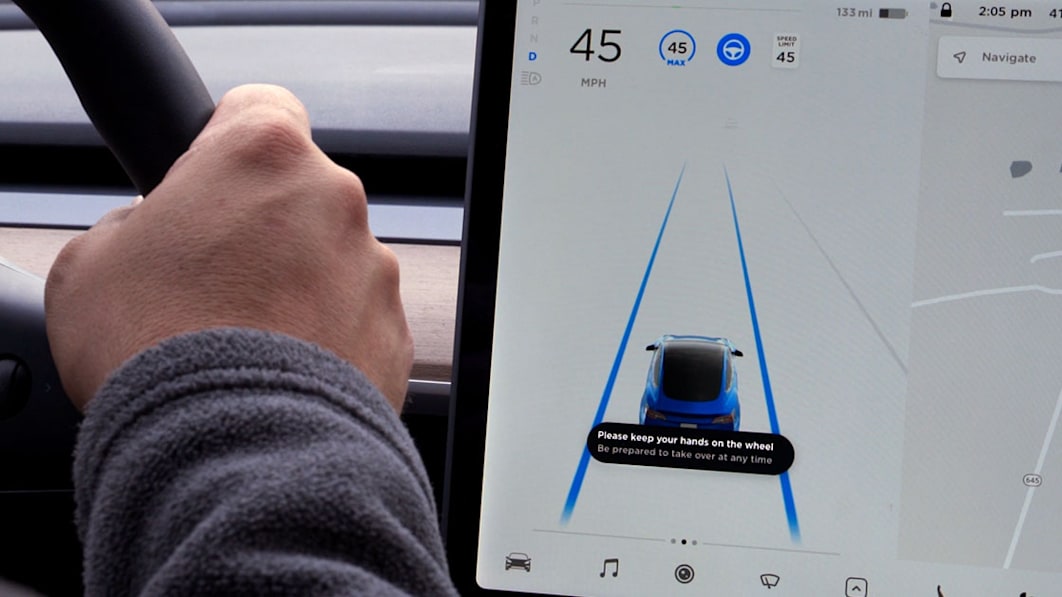IIHS to rate Autopilot, Super Cruise and other partial automation tech

The Insurance Institute for Highway Safety just revealed another test it will be performing on new cars as part of its battery of safety tests. It’s a ratings program meant to evaluate vehicles with partial automation to determine how safe they are when in use. As with their crash tests, the IIHS will designate ratings of Good, Acceptable, Marginal and Poor.
These new ratings will be applied to systems like Super Cruise from GM, BlueCruise from Ford and Autopilot from Tesla. Of course, other systems exist, and the IIHS will test those, as well. The IIHS already tests forward collision warning and automatic emergency braking systems, but uses a different ratings system.
To receive the highest “Good” rating in these tests, the IIHS is stressing the need to have an excellent driver monitoring system. It must be able to “ensure that the driver’s eyes are directed at the road and their hands are either on the wheel or ready to grab it at all times.” Many driver monitoring systems are already fairly effective at tracking a driver’s eyes and can sense when a driver’s hand is on the wheel, but tracking their hand position when it’s off the wheel would be new. Theoretically, manufacturers would need new sensor suites to precisely track drivers’ hands relative to the steering wheel if they want to offer a truly hands-free system that passes the IIHS’ test.
Additionally, “Good” rated cars will have multiple types of escalating alerts to get the driver’s attention if the monitoring finds them to be inattentive. Examples of acceptable alerts include chimes, vibrations, pulsing of the brakes and tugging on the driver’s seat belt. If none of the alerts remedy the driver’s inattentiveness, then the vehicle will need a fail-safe procedure that slows the vehicle to a stop or crawl, notifies the manufacturer concierge and calls emergency services if necessary. The IIHS also says that after an escalation of alerts occurs, the driver should be locked out of the partial automation system until the engine is switched off and back on again.

Guidance on automated lane changes is up next. To earn a “Good” rating, the car must only perform automatic lane changes when they’re initiated by the driver — for example, you tell the car you want to move into the left lane by activating the left turn signal. Additionally, adaptive cruise control must be designed to not reactivate after traffic ahead brings the car to an elongated stop and the driver is not looking at the road.
The list of IIHS requirements continues. For that “Good” rating, lane-centering systems must not be designed to deactivate upon driver involvement — the IIHS says this discourages driver correction, because said driver wouldn’t want the system turning off on them. The system must also be designed to not function when the driver’s seat belt is unfastened or when either automatic emergency braking or lane departure prevention is disabled.
That’s a long list of requirements from the IIHS, and we suspect that manufacturers will have some work to do if they care to receive a “Good” rating. We think it’s ultimately good that there will be a uniform, third-party rating system to help consumers differentiate between various systems and clearly identify what they can and cannot do.
To that end, the IIHS had this to say in a nameless callout that could only be directed at one manufacturer: Tesla.
“So far, even the most advanced systems require active supervision by the driver,” the IIHS states. “However, some manufacturers have oversold the capabilities of their systems, prompting drivers to treat the systems as if they can drive the car on their own. In egregious cases, drivers have been documented watching videos or playing games on their cellphones or even taking naps while speeding down the expressway.”
The first set of ratings are expected to be released at some point in 2022, though the IIHS doesn’t say exactly when as its testing has been delayed by vehicle shortages.







